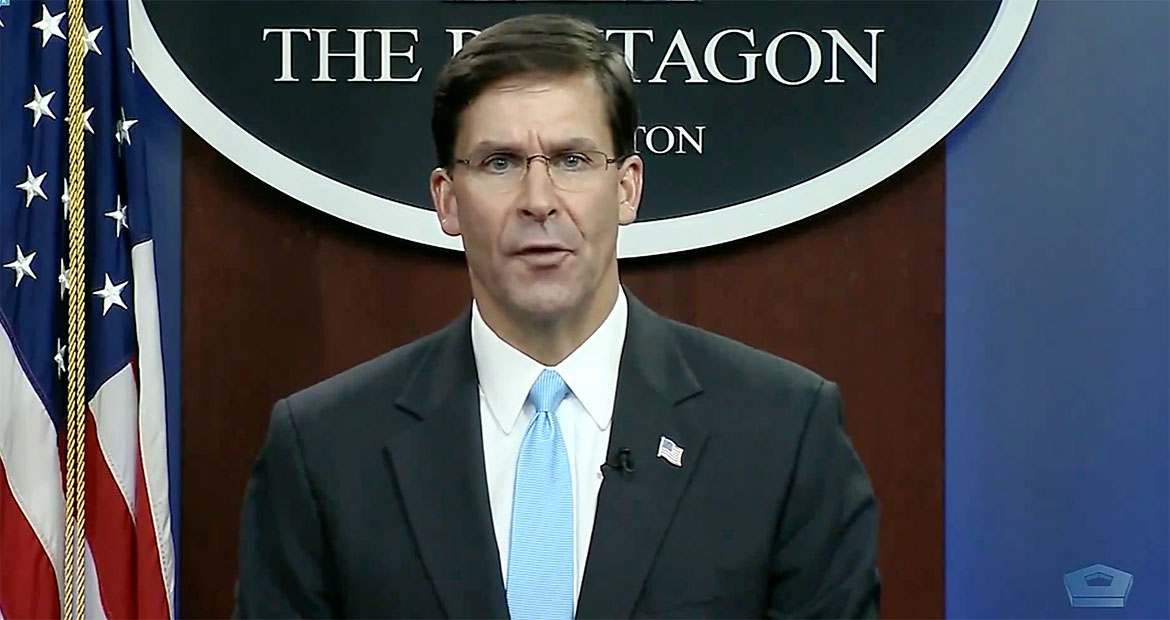In a significant push towards enhancing national security and maintaining technological superiority in space, Defense Secretary Mark T. Esper emphasized the pivotal role of the U.S. Air Force and the newly established Space Force in pioneering new technologies in a speech from 2020. Since then, there has been additional development in the military space field.
This development is part of a broader strategy to counter emerging threats in space and streamline space-based capabilities for military applications. The initiative, as outlined by Esper, focuses on several key areas:
Autonomy in Weapon Systems
The Department of Defense has updated its directive on autonomous weapon systems, signaling a move towards more sophisticated, AI-driven defense mechanisms. This includes the potential integration of systems that could one day lead to autonomous space combat capabilities, although details remain classified.
In a significant push towards enhancing national security and maintaining technological superiority in space, Defense Secretary #MarkTEsper emphasized the pivotal role of the U.S. Air Force and the newly established #SpaceForce in pioneering new technologies. pic.twitter.com/uVVQnlaNro
— NewsVoice (@newsvoicemag) October 22, 2024
National Security Space Launch (NSSL) Program
The Space Force has awarded SpaceX the first two launch service orders under the new NSSL Phase 3 Lane 1. This marks a continued reliance on private sector innovation to achieve more cost-effective and flexible launch solutions, ensuring access to space for national security payloads.
Advanced Maneuverable Spacecraft
The secretive X-37B space plane is set to perform unprecedented maneuvers, showcasing advancements in spacecraft reusability, autonomy, and, possibly, rapid orbital change capabilities. These maneuvers could be pivotal for strategic defense and reconnaissance missions.
Directed Energy Weapons and Killer Satellites
Although details remain mainly classified, there’s an ongoing discussion about the development of directed energy weapons and the capabilities of satellites that could potentially neutralize other satellites, indicating a shift towards active space defense and control mechanisms.
Integration with Existing Technologies
The U.S. Marine Corps test flights with the XQ-58A Valkyrie alongside the F-35B illustrate a future where manned and unmanned systems work together, enhancing operational flexibility and effectiveness in combat scenarios.
Plasma and Radar Technologies
Innovations like those seen with the HAARP (High Frequency Active Auroral Research Program) related experiments suggest research into atmospheric and ionospheric manipulation for communication or possibly for disrupting enemy satellite signals.
Esper’s statements underline a transformative era for U.S. military space operations, where speed, resilience, and integration across different warfighting domains are paramount. The focus on new technologies aims to outpace adversaries and ensure that space remains a secure frontier for U.S. interests.
This push towards advanced space capabilities reflects a broader geopolitical competition where space is increasingly seen as a critical battlefield.
As nations like China and Russia advance their space warfare capabilities, the U.S. response through the Air Force and Space Force initiatives indicates a clear intent to lead in the space domain, not just in exploration but also in defense capabilities.
These developments have profound implications, potentially setting the stage for a new arms race in space. The stakes involve not only military superiority but also the control of global communications, navigation, and surveillance networks.
Source


